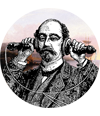History of Community Organizing
Categories:
There are two major schools of community organizing:
- Saul Alinsky: This focuses organizing on existing organizations. His book "Reveille for Radicals" (1946, updated 1969) describes how to build coalitions of groups within communities. Over the past ten years, the Industrial Areas Foundation has built organizations around churches. His last book, "Rules for Radicals: A Pragmatic Primer for Realistic Radicals," was published in 1971.
- Fred Ross: Ross is not known nearly as well as Alinsky (a point which his partisans say is important in itself. A "real" organizer is not a leader. He/she stays in the background.) Ross is the guru of organizations that believe in building membership organizations one at a time. Ross himself had a great influence on Cesar Chavez (a point I make on a piece I did on Chavez years ago that appears on the Institute for the Study of Civic Values site). The National Welfare Rights Organization (a group active from 1966 to 1975) again, built on chapters of welfare recipients--is out of the Fred Ross tradition. And today, the leading group inspired by Fred Ross is Association of Community Organizations for Reform Now (ACORN).
What are some other styles of community organizing you've learned about?










